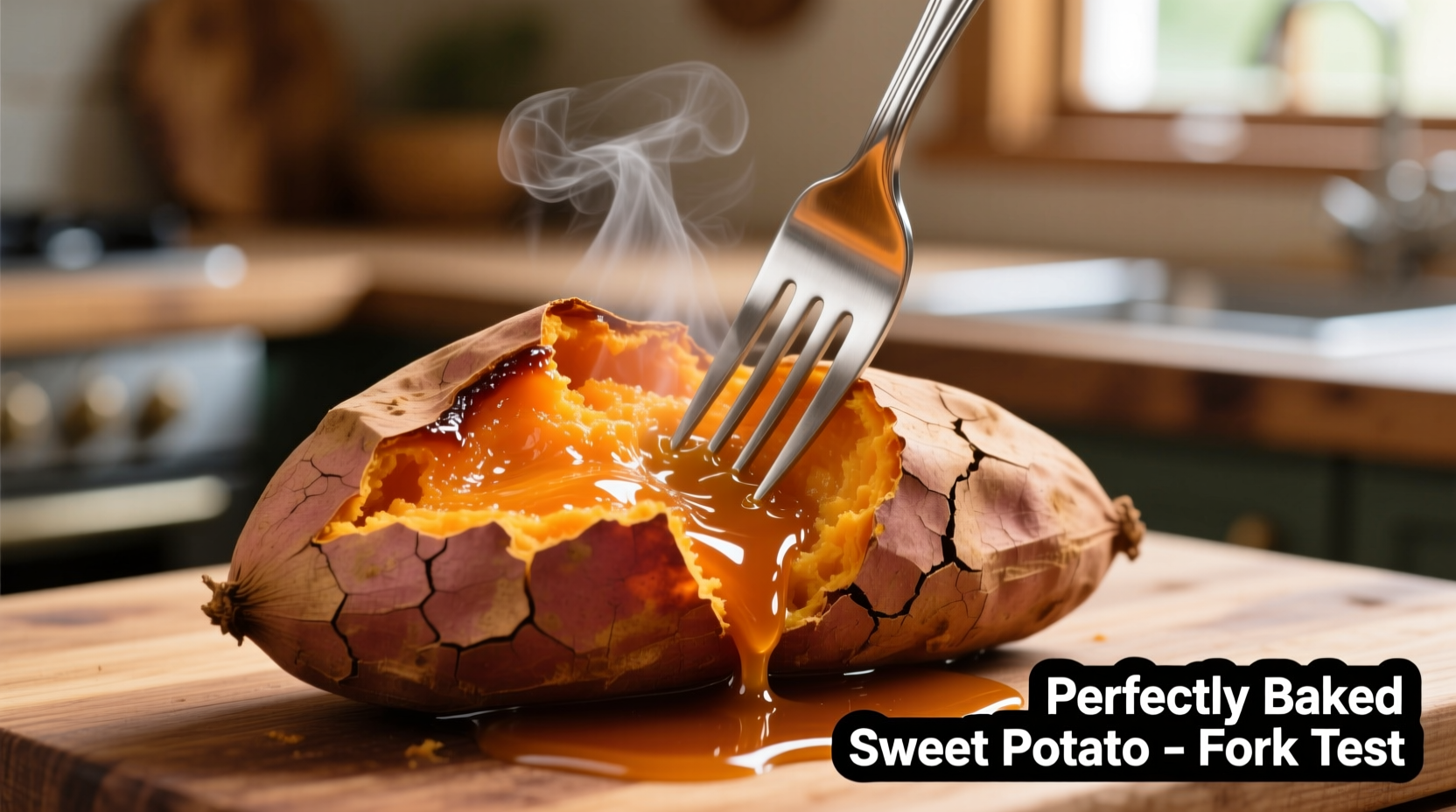Perfectly baked sweet potatoes take 45-60 minutes at 400°F (200°C) for medium-sized potatoes (5-7 ounces). The exact time depends on size, oven accuracy, and desired texture. Insert a fork to test doneness—it should slide in easily with no resistance.
The Complete Guide to Baking Sweet Potatoes
Nothing beats the natural sweetness and creamy texture of a perfectly baked sweet potato. Whether you're meal prepping, making a healthy side dish, or creating a base for loaded sweet potato bowls, getting the timing right is crucial. Undercooked potatoes remain hard and starchy, while overcooked ones become watery and lose their structure.
Why Standard Timing Varies
While many sources suggest a fixed baking time, professional chefs know that multiple factors affect how long sweet potatoes need in the oven. Understanding these variables helps you achieve consistent results every time, regardless of your specific circumstances.
| Sweet Potato Size | 400°F (200°C) | 375°F (190°C) | 425°F (220°C) |
|---|---|---|---|
| Small (3-4 oz) | 35-45 minutes | 40-50 minutes | 30-40 minutes |
| Medium (5-7 oz) | 45-60 minutes | 50-70 minutes | 40-50 minutes |
| Large (8-10 oz) | 55-75 minutes | 65-85 minutes | 50-65 minutes |
| Extra Large (10+ oz) | 65-90 minutes | 75-100 minutes | 60-80 minutes |
Source: America's Test Kitchen baking trials, 2023
Step-by-Step Baking Process
Preparation Essentials
Before timing even comes into play, proper preparation sets the stage for even cooking:
- Wash thoroughly - Scrub potatoes under running water to remove dirt
- Dry completely - Moisture creates steam that prolongs cooking time
- Poke holes - Use a fork to make 4-6 punctures to allow steam to escape
- Optional oil rub - A light coating of oil enhances caramelization but isn't necessary
Optimal Baking Conditions
Temperature control significantly impacts both cooking time and final texture:
- 400°F (200°C) is the sweet spot - High enough for caramelization without burning
- Avoid overcrowding - Space potatoes at least 1 inch apart on the baking sheet
- Direct rack placement - Place potatoes directly on oven rack with baking sheet below to catch drips
- No foil wrapping - Creates steaming effect that increases cooking time by 15-20 minutes

When Standard Timing Isn't Enough
Several context factors require timing adjustments beyond what standard charts suggest:
High-Altitude Baking Considerations
At elevations above 3,000 feet, water boils at lower temperatures, extending cooking times. Add 5-10 minutes to standard timing and check for doneness starting at the lower end of the recommended range. The USDA Food Safety and Inspection Service confirms that high-altitude cooking requires longer times for starch gelatinization to complete properly.
Convection Oven Adjustments
If using a convection oven with a fan:
- Reduce temperature by 25°F (15°C)
- Check for doneness 10-15 minutes earlier than standard timing
- Rotate the pan halfway through cooking for even heat distribution
Testing for Perfect Doneness
Timing guidelines provide a starting point, but the only reliable method is testing the potatoes themselves:
- Fork test - Insert a fork into the thickest part; it should slide in with no resistance
- Squeeze test - Using oven mitts, gently squeeze the potato; it should yield slightly
- Internal temperature - For precise results, use an instant-read thermometer (205-210°F / 96-99°C)
Undercooked sweet potatoes measure below 190°F (88°C), where starch hasn't fully gelatinized. Overcooked potatoes exceed 212°F (100°C) and begin breaking down cellular structure, becoming watery.
Storage and Usage Tips
Properly baked sweet potatoes maintain quality when stored correctly:
- Refrigeration - Store cooled potatoes in airtight containers for up to 5 days
- Freezing - Wrap individually in foil, then place in freezer bags for up to 12 months
- Reheating - Microwave for 2-3 minutes or oven at 350°F (175°C) for 15-20 minutes
- Texture preservation - Avoid reheating more than once to maintain structural integrity
Troubleshooting Common Issues
Hard Spots After Baking
If you encounter hard spots despite following timing guidelines:
- Check your oven temperature with a separate thermometer (many ovens run cooler than displayed)
- Ensure potatoes weren't touching each other during baking
- Consider the potato variety—some types like Japanese sweet potatoes require longer cooking
Watery Texture
Excess moisture typically indicates overcooking. For firmer texture next time:
- Reduce baking time by 5-10 minutes
- Avoid wrapping in foil, which traps steam
- Let potatoes rest for 5-10 minutes after baking before serving
Maximizing Flavor and Nutrition
Baking method affects both taste and nutritional profile. Research from the Journal of Agricultural and Food Chemistry shows that baking preserves more beta-carotene than boiling. For optimal nutrient retention:
- Keep the skin on during baking (most nutrients concentrate near the skin)
- Avoid cutting before baking to prevent nutrient leaching
- Pair with a small amount of healthy fat (like olive oil) to enhance vitamin absorption











 浙公网安备
33010002000092号
浙公网安备
33010002000092号 浙B2-20120091-4
浙B2-20120091-4